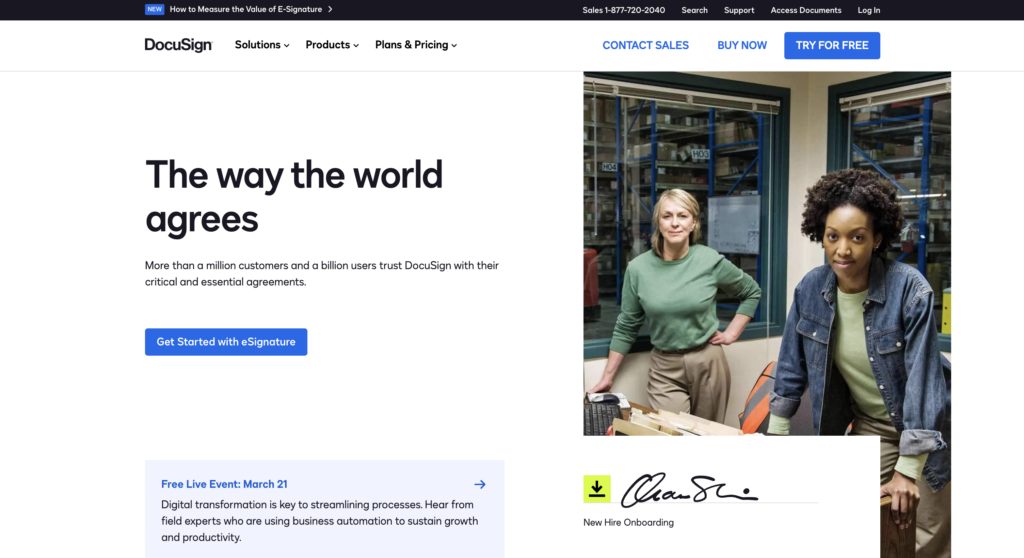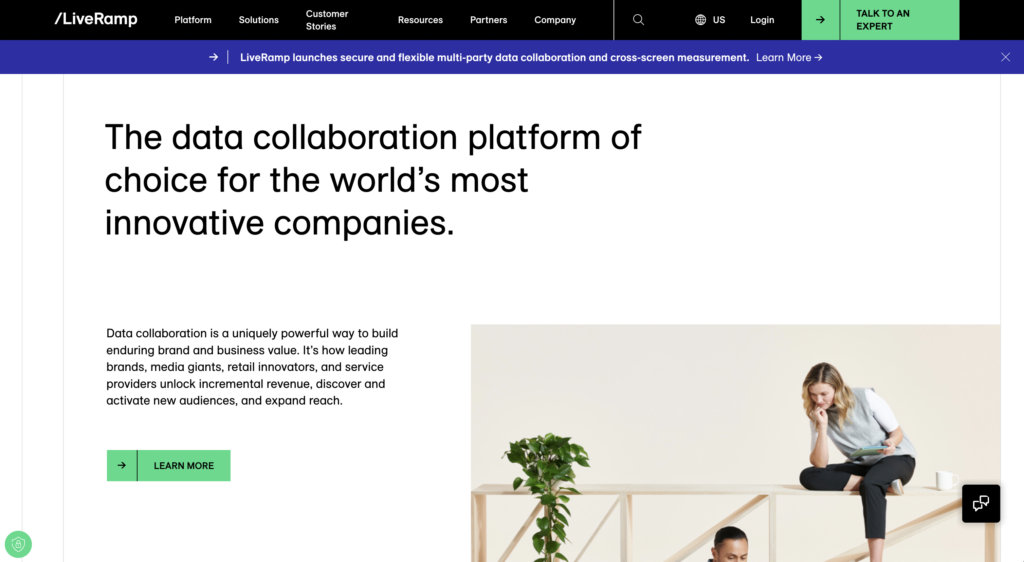An ABM campaign targets a specific account, reducing wasted time and money on leads that won’t convert.
From personalizing content to creating custom experiences, ABM campaigns allow you to strategically target the right customers at the right time. With the ability to track metrics and measure success, ABM campaigns are a great way to optimize your marketing efforts and get the most out of your budget.
This guide will provide you with everything you need to know about ABM campaigns, from setting up an account-based marketing strategy to its benefits and the various examples.
What Is An ABM Campaign?
An Account-Based Marketing (ABM) campaign is a focused integrated marketing strategy employed by marketing and sales teams. It targets key accounts and utilizes a highly personalized messaging approach, aligning with the business objectives of high value accounts. In this sales and marketing collaborative effort, the ABM strategy focuses on identifying and engaging target accounts that align with the ideal customer profile, a fundamental part of the sales process.
These campaigns involve the marketing team and sales reps working closely to create personalized content for each target account. This approach ensures that the marketing efforts are concentrated on the most promising prospects, or high quality target accounts, enhancing the efficiency of the sales cycle and fostering revenue growth.
ABM is especially beneficial in long sales cycles, where personalized campaigns and direct mail play a critical role. By leveraging account based marketing tools and digital marketing techniques, such as web personalization and marketing automation, the marketing and sales teams can deliver more relevant and impactful marketing messages to their target audience. This results in more effective engagement with key prospects and decision makers within the targeted accounts.
ABM campaigns are more effective than traditional outbound and inbound marketing strategies because they allow you to focus on acquiring the accounts. 87% of marketers say ABM outperforms other marketing initiatives, making it one of the most effective marketing strategies.
Benefits Of Running An ABM Campaign
Account-based marketing is swiftly becoming the go-to strategy for B2B enterprises targeting sizable accounts. If you’re looking to make sales into large accounts with extended sales cycles and hefty deal sizes, then account-based marketing offers many benefits compared to other marketing strategies.
Measure ROI
With ABM, you can track and measure the ROI of all your efforts. You’ll see which campaigns, assets, and channels are driving conversions and revenue and which are wasting resources. ABM allows you to track and monitor your campaigns in real time, so you can make timely adjustments and ensure your campaigns are on track for success.
Around 97% of marketers earned higher ROI from their ABM initiatives than other marketing campaigns, so you can be sure your efforts will pay off.
Align Sales And Marketing Teams
To maximize any ABM campaign’s success, make sure your sales and marketing teams align with each other. When sales and marketing teams collaborate, they can create personalized content, determine which accounts to target and ensure leads receive the most relevant messaging. This can help close deals more quickly and increase overall success rates.
Good alignment of sales and marketing teams can reduce the sales cycle, increase the close rate, and maximize ROI.
Streamline Sales Cycle
Generally, the sales cycle for enterprise deals can be lengthy and challenging to navigate. With ABM, you can streamline your sales cycles, eliminating unnecessary steps and ensuring leads go through the most efficient sales pipeline. This way, you can quickly identify and convert the most promising leads and customize each journey.
By concentrating on high-value accounts, you can save time and resources on leads that will never turn a profit. This lets your teams focus on the most promising opportunities, drastically reducing the sales cycle length.
Deliver Consistent Customer Experiences
To create the best possible customer experience, marketing, and sales must work together to ensure customers get the same message everywhere. ABM campaigns allow you to create hyper-targeted content that appeals directly to your ideal customers and let them know you understand their needs, making them more likely to become loyal customers.
85% of marketers say ABM significantly helped them retain and grow their existing client relationships, so you can be sure ABM campaigns will improve customer experiences.
Expand Through Account Relationships
ABM campaigns focus on expanding relationships with high-value accounts and delivering value rather than chasing new leads. ABM allows you to build relationships more quickly and nurture accounts, creating lasting partnerships that can help fuel growth and scale your business.
Account-based marketing helps you build relationships with your customers, letting them know they’re valued and giving them a reason to trust your brand, ultimately leading to increased customer loyalty and more sales in the long run.
ABM Campaign Strategy Breakdown
ABM campaigns can be a great way to target high-value accounts, but your efforts may go to waste if you don’t have the right strategy. To get the most out of your ABM campaigns, use these steps:
Align Sales And Marketing Teams
As mentioned earlier, it’s essential for success that sales and marketing teams align closely. Marketing should provide sales with the right content to send to prospects, while sales should let marketing know which accounts they’re targeting and their progress.
This communication should be ongoing and transparent, so both teams can work together to create the most effective ABM campaigns. All the decisions should be made in collaboration so that the campaign can reach maximum success.
Conduct Research To Identify Your Target Accounts
One of the most critical steps in any ABM campaign is researching which accounts best fit you. Consider the size, location, industry, and other relevant criteria to determine which accounts you should target. You can also find out about their current level of engagement, customer pain points, and buying behavior.
Once you have this information, you can create a list of target accounts and move to the next step.
Create Customized Account Plans
After identifying your target accounts, it’s time to create customized account plans for each one. This plan should include everything from the messaging and content you’ll use to the tactics, channels, and metrics you will track. Every customer’s account plan should be customized to meet their requirements, even though certain parts may be similar across accounts.
By creating a customized plan, you can tailor your approach to each account and maximize their journey for each one.
Execute The ABM Campaign
Once you have created the customized plan for each account, it’s time to implement the ABM campaign. Start by crafting personalized messages for each account and distributing them through the proper channels. Depending on the account and their preferences, this could be email, social media, or even direct mail.
The success of your campaign will depend on how well you execute it, so ensure you have the right people in place to do the job.
Track Progress And Optimize
Measuring the success of your ABM campaigns is essential. Track key metrics, such as engagement, website visits, and conversions, to understand how successful each account plan has been. If certain accounts are not responding to your message, consider adjusting the plan and see if that has a better effect.
By tracking progress and optimizing your ABM campaigns, you can ensure that each account receives the best experience possible.
Account-Based Marketing Tactics
Incorporating Account-Based Marketing (ABM) into your marketing strategy can significantly enhance the alignment and effectiveness of your marketing and sales efforts.
This section covers specific ABM tactics that can be integrated into your overall marketing strategy to target high-value accounts more effectively.
Identifying and Engaging Key Accounts
- Leverage Third-Party Data: Utilize third-party data to gain deeper insights into your target accounts. This data can help you understand the needs and behavior of key stakeholders in your high-value target accounts, enabling more precise targeting.
- Utilize ABM Software and Platforms: Implement ABM software to streamline your ABM efforts. These platforms can assist in identifying target accounts, engaging them with personalized content, and tracking the effectiveness of your campaigns.
- Digital Marketing Integration: Incorporate digital marketing tactics such as LinkedIn marketing solutions and other social media platforms to engage with decision-makers and influencers within your target accounts.
Personalizing the Customer Journey
- Customized Content Creation: Develop personalized content tailored to the specific needs and interests of each target account. This could include personalized emails, custom landing pages, and targeted digital ads.
- Account-Based Advertising: Use account-based advertising to deliver personalized marketing messages to individuals within your target accounts, especially on digital platforms where they are most active.
- Sales and Marketing Alignment: Ensure that your sales teams and marketing department work closely together to create a seamless experience for the target account, from the first touchpoint to the closing of a sale.
Optimizing Sales and Marketing Resources
- Focused Marketing Budgets: Allocate marketing budgets more effectively by focusing resources on engaging with high-value accounts, rather than spreading efforts too thin across a wide net of potential leads.
- Streamline the Sales Funnel: Modify your sales funnel to accommodate the ABM approach. This might include creating specific stages in the sales process that are tailored to the needs of key accounts.
- Sales Team Involvement: Get your sales team deeply involved in the ABM process. Their insights can be invaluable in identifying key prospects and tailoring the approach to each account.
Strategic ABM Approaches
- Developing ABM Strategies and Frameworks: Establish clear strategies and frameworks for your ABM program, ensuring that all efforts are aligned with the overall business objectives and marketing approach.
- Measuring Revenue Potential and Growth: Track and measure the impact of your ABM efforts on revenue growth. This involves evaluating the customer lifetime value and revenue potential of each target account.
- Calls to Action for Decision Makers: Craft compelling calls to action that resonate with the decision-makers within your target accounts. These should be designed to move them further along the customer journey.
Expanding ABM Success
- Evaluate and Optimize ABM Efforts: Regularly review your ABM campaigns to identify areas for improvement. Use insights from these evaluations to optimize future campaigns.
- Leveraging Marketing Automation: Integrate marketing automation tools to make your ABM campaigns more efficient and scalable, particularly when engaging with multiple accounts simultaneously.
- Success Stories and Real World Examples: Share success stories and real-world examples of effective ABM campaigns within your organization to inspire and guide your marketing teams.
By implementing these tactics, you can refine your ABM campaigns to better target and engage high-value accounts, ultimately leading to increased revenue and stronger customer relationships.
3 Awesome Examples Of ABM Campaigns
The best way to gain inspiration for your ABM campaigns is to look at what other companies are doing. Here are three excellent account-based marketing examples of companies that have executed successful ABM campaigns.
GumGum

ABM Campaign GumGum TMobile
GumGum, a leader in computer vision technology, implemented an ABM campaign to target deals with T-Mobile. Through research, they discovered that the CEO of T-Mobile was a batman fan, so they designed a campaign with Batman-themed content. They created a comic book named T-Man and Gums, which featured T-Mobile’s CEO as the hero. The campaign resulted in a successful partnership between GumGum and T-Mobile.
The best thing was that the company tailored this campaign according to the interests of T-Mobile’s CEO, which helped make a personal connection with him and increased the chances of success.
DocuSign

DocuSign is a digital transaction management provider that implemented an ABM campaign to boost conversion rates of high-value accounts. They made display ads for 450 enterprise accounts, which featured customized images and messages, segmenting accounts based on their buying cycle. Targeting six different industries, DocuSign used customized messages, testimonials, peer logos, targeted images, and more to reach their accounts. This campaign successfully increased conversion rates, proving that personalized ABM campaigns can be highly effective.
Focusing on segmentation is the perfect way to tailor your B2B services to each unique industry you serve.
LiveRamp

LiveRamp, a data onboarding platform, ran an ABM campaign targeting a list of Fortune 500 companies. They used a hyper-targeted approach to target these accounts, using display ads and email sequences tailored to each company’s industry and needs. At the start of the campaign, they narrowed the list to the 15 most promising accounts, which resulted in a substantial increase in leads and sales in a short period.
The best part about this campaign was that it focused on a smaller, more targeted list of accounts rather than trying to target too many at once. It proves that hyper-targeted campaigns can deliver impressive results.
Final Thoughts
Do you want to increase engagement and conversions among your B2B accounts? An ABM campaign can be the perfect solution. By crafting personalized messages, tracking progress, and optimizing campaigns, you can ensure each account receives the best experience possible.
But this is only part of the solution! ABM campaigns can become complex, especially if you’re running global campaigns in different regions and with different assets. To manage your media – from planning and measuring all the way through to one-click reporting, Mediatool can turn all your spreadsheet nightmares into cloud-like heaven.
Say goodbye to spreadsheets and hello to Mediatool. Book a tour today.





